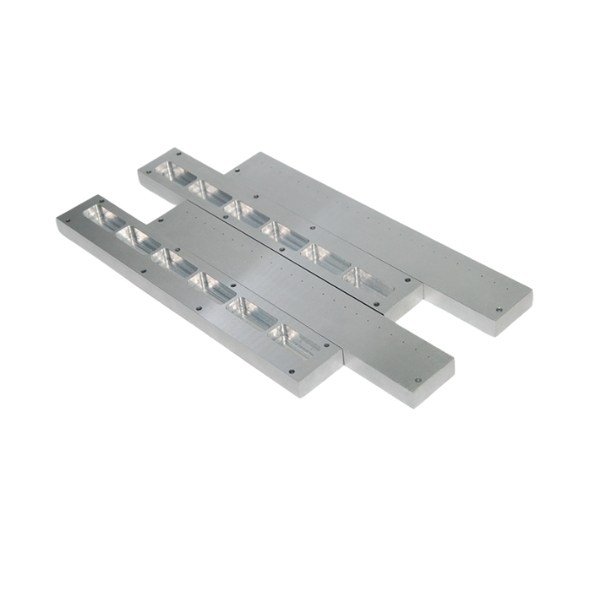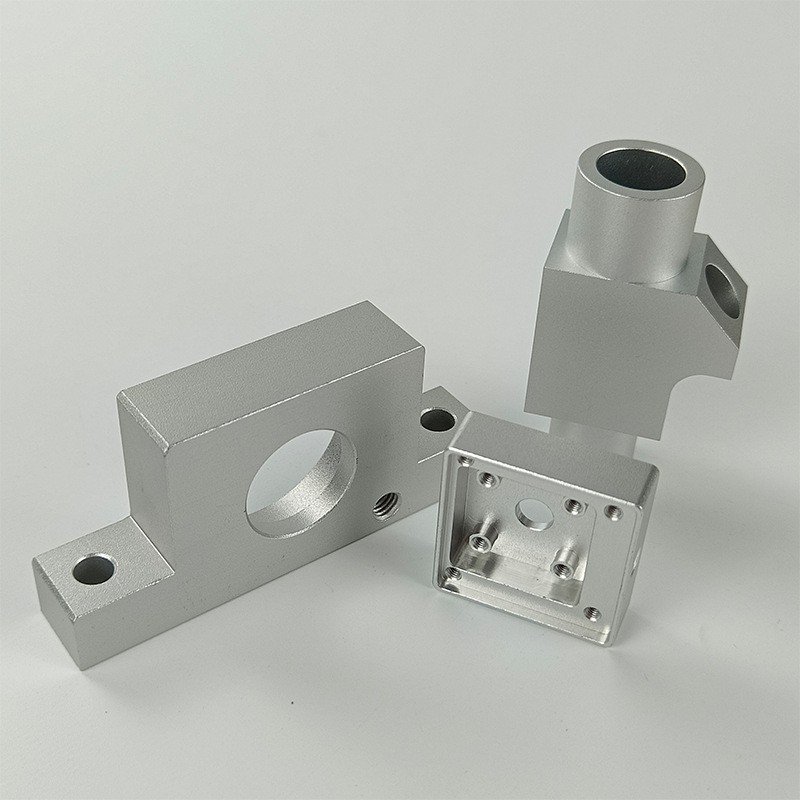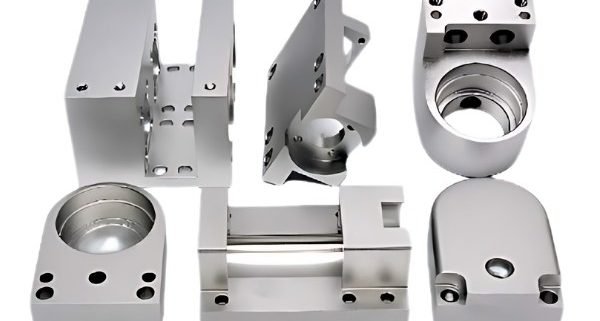A Comprehensive Guide To Prototype CNC Machining
Prototype cnc machining is a valueable choice for producing small quantities of prototypes to large volumes quickly as compared to the other methods. Several kinds of prototypes can be simply made by CNC prototype machining. Appearance prototypes, like the cases of auto cars, offer visual clues on the final part’s look and behavior. On the contrary, functional prototypes need more precision, thus, they stress the product structure and the stability.

The article demonstates about CNC machined prototypes, as well as their advantages, and disadvantages. Moreover, it will highlight the key aspects including;
What is Prototype CNC Machining?
The prototype cnc machining is a subtractive manufacturing process for precisely producing prototype components that can be utilized for different purposes. These prototype components are employed for testing, and designing phases for parts functionalities. In addition, the primary purposes of such tests for identifying visuals, marketing, or fundraising. Basically, cnc prototype machining produces the samples of a product or a machine that, if approved, will continue to the stages of design finalization, manufacturing, and sales.
CNC’s versatility enables you to make prototypes from different materials such as economical plastics to high strength metals to create prototypes.
Why CNC Machining Is a Valuable Process?
CNC machining is an exceptional option for prototyping detailed feature parts. Firstly, it provides high precision, accuracy, and dimensional stability to parts because of its computerized controls that strictly supervise the movement of the workpiece and cutting tool. This degree of control guarantees that the prototype that is produced is exactly the same as the design. Alongside this, the rapid prototype machining is notably fast, and helps replicate complicated patterns prototypes down to tolerances upto +/- 0.005x. Conversely, processes like injection molding, , and forging or 3d printing which often take months to meet tight tolerances requirements, and molds. Thus, advanced CNC machines let you prototype immediately after the CAD model is converted into the CAM files or g-codes.
Types Of CNC Machines Used For Prototyping:
There are various machining approaches used for shaping functional prototypes, and end-use products.
CNC Turning Prototyping:
CNC turning, using a rotating machine called lathes, for the creation of the cnc prototyping of rounded or symmetrical components. The process is a combination of the material being spun fast and a cutting tool as per programmed code to shape high quality exact specification parts or products. The lathe machines are considered ideal machines for prototypes with round mid-sections because of their specialization in round components.
CNC Milling Prototype:
For intricate prototypes, a CNC machine that has up to five axes may be needed, cnc milling is credible. The extra axes are the ones that make it possible to have a more accurate cutting, thus, the creation of the complicated parts, but the cost is higher. In the CNC milling prototype operations, the computer-controlled tool head cuts the final prototype from the large block of material. The starting block is the basis for the whole machining process.
CNC Routers
The CNC Router is the best way to prototype because it allows you to make the design of the product exactly as you want it to be. CNC routers are like CNC mills and machines but they are more affordable, and they have a gantry system which makes the work area bigger than the machine’s size. Nevertheless, this layout restricts their complexity. Routers are the best option for working with materials like wood, plastic, and soft metals like aluminum. They are usually adopted by industrial machinists and small business hobbyists for replicating exact design feature products.
Usually, 3-axes, or 2-axis routers are widely used for intricate designs. Among these, 2-dimensional routers are used for simpler geometrical components, while 3-dimensional parts are made by using 3-dimensional components. Nevertheless, they cannot be as precise as CNC mills. Because, the process of creating or turning detailed CNC files based on the tool and machine acquires a lot of skill or skilled professionals.
CNC Laser Cutter
The CNC Laser Cutter is a technique that employs a high energy beam of laser cut to shape a prototype product, which is then tested and improved until the final product is made.
The laser cutters that are strong enough to be used by small companies can handle metals like aluminum, as well as sturdy plastics such as; acrylics, textiles, composites, and wood for prototype CNC machining. Their flexibility is the reason why they are the most popular among the small firms that want to make a lot of prototypes without going beyond their budget.
Nevertheless, laser cutters can pose “scorch marks” on the prototype part surface because of generated heat during the cutting process. In addition, the design complexity is usually limited as mostly these CNC cutters can precisely use multiple axes for product development.
CNC machining is considered as an ideal process applied in different manufacturing fields. It helps to form highly detailed and complex feature parts with exceptional dimensional stability, and high degree of precision. In the majority of the industries, a working prototype, or even a version that shows the product’s functionality, is utmost.
In contrast, for the functional prototypes that requires rigrous strength, mechanical stability and specific features that additive methods cannot provide, machined tooling is usually the choice.
Applications of Precision Prototype CNC Machining
Lets discuss various industries that use precision prototyping machining for shaping lightweight components for testing, and validating designs before initialising their part production projects on larger scales. Here are some of the commonest industries that use CNC machining as a primary source to manufacture stringent standard quality exact specification parts or products.

Medical Industry
In the medical field, CNC machining is the most crucial factor that makes the prototyping process faster. For instance, pharmaceutical companies usually need prototypes to demonstrate the product’s working before the final production. Precision and accuracy are the most important factors, especially in the medical devices, and CNC machining ensures that the prototypes are the exact copies of the final product and can work perfectly in their intended functions. Some examples of the medical industry are; orthotic devices, secure enclosures, implants, MRI machines, research equipment, and so on.
Military & Defense Industry
The fast prototyping CNC machining services are the main reason why they are very important in the defense sector as the complicated mechanisms that are needed for the ammunition and military vehicles are the main factors.
Prototypes are the main components of the guarantee that these mechanisms are working correctly, therefore, CNC prototype machining is the most preferred method. The products or items like aircraft components, transportation and communication systems, ammunition, and various equipment are the examples of products that are produced by CNC machining in this industry.
Aerospace Industry
The aerospace industry is very sensitive to precision as even the slightest inaccuracies can cause the increase of drag or wear of the aircraft components. Thus, the industry needs to have the prototypes to make sure that they are perfect and flawless before they go into production. Prototyping is the process of testing the components in controlled environments and it is sure that they are suitable for real-world applications.
CNC prototype machining is a crucial part of the manufacturing of numerous components for this industry, such as landing gear ports, bushings, manifolds, and airfoils. The widespread application of computer numerically controlled (CNC) machining in the aerospace industry is to be explored.
Automotive Industry
Auto car makers, and OEMs manufacturers always practice rapid prototyping manufacturing for iterating new designs and aesthetic improvements. Thus, the need for production of prototypes for testing before mass production. These prototypes are subjected to strict testing to ensure that they are working properly and are properly fit, tested, and function before full-scale manufacturing begins.
The Prototype cnc machining process is the key factor in the production of accurate car prototypes which are designed according to the given specifications. Besides, CNC prototyping can also be used to produce parts for various vehicles, such as cargo boats, delivery vehicles, etc.
Benefits of Rapid Prototyping Machining
Let’s discuss the benefits of rapid prototyping machining.
Cost-Effective:
CNC machining is a cheap option when you have to produce a few prototypes. Unlike injection molding, which takes several months for mold preparation and tolerance adjustments, CNC prototype machining can start within weeks of blueprints and tolerances finalization.
High Tolerance:
A major benefit of speeding the production of prototypes is the high tolerance ranges that are possible with CNC machining. On the contrary, CNC machining is different from 3D printing in that it creates detailed prototypes that are very close to the final product. This is particularly useful for structural and functional testing.
Prototyping Machining
In most cases, the prototype is the last process of production. Besides, the prototype helps in the early identification of the product’s issues or flaws and also, it accelerates the production by having most of the components already prepared at this stage.
Low Volume Production
Although rapid prototyping is usually linked with prototyping, it is also very successful for low volume production. The methods like injection molding, vacuum casting, and even 3D printing produce products of high quality that can satisfy the initial market demand effectively.
What are the Limitations of CNC Machining Prototyping?
Let’s discuss some of the disadvantages of rapid prototyping machining.
More Expensive Than 3D Printing:
The CNC prototype machining is more expensive than 3D printing for small startups because of the high demands for human supervision and power supply. Moreover, the raw materials used in CNC prototyping are usually more expensive than the materials used in 3D printing, such as PLA.
This cost difference is a major reason why engineers are looking for other prototyping techniques, even though they intend to use machining for the final parts. Although the development is a resource-intensive process, companies usually try to cut down the costs in the early prototyping stages.
Environmentally Unfriendly:
CNC machining, being a subtractive process, produces a lot of waste while material removal tends to incur higher costs on product development budget. This waste is mainly made of chipped metals or plastics that cannot be reused and therefore must be thrown away. This factor is responsible for the environmental unfriendliness of the CNC machining process.
Conventional Vs. Rapid Prototyping: Key Differences
Traditionally, product development prototyping followed these steps:
- The process of designing a product using solid modeling software to create a 3D CAD model and 2D drawings. This process usually takes days or weeks to complete.
- Gaining quotes from different manufacturers to produce the needed exact specification parts.
- It normally takes a long turnarounds from days to even, sometimes months before you get the machined prototype.
The conventional prototyping techniques, in addition, like sand casting, involves the usage of hand made models of clay, wood, wire or tape to produce the parts. Therefore, it’s typically a time consuming process of rapid prototyping. With precision prototype machining like CNC machining, 3D printing, and rapid prototyping, engineers can today create functional prototypes faster and more efficiently than conventional techniques.
Summing Up
CNC prototype machining is a unique method of making prototypes, which is characterized by its fast turnaround and cycle times for fabricating different specifications products. Thus, the most efficient compared to the other alternatives like 3D printing. Besides, CNC machining produces prototypes that are more alike to the actual product.
In addition, its use is vital, and so widespread across manufacturing industries including; automotive, aerospace, and consumer electronics because it provides high performance interior to exterior parts by meeting detailed features, and exact part tolerances as minimum as far to +/- 0.005. It’s recommended before initializing your prototype cnc machining project to consult with industry professionals for optimal outcomes in your projects. So, reach out to us to find out if CNC machined prototypes are the best for your project.

